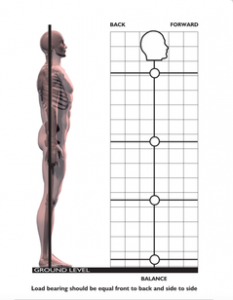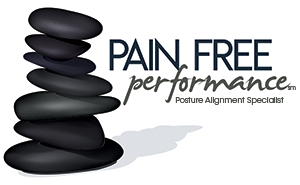As postural alignment specialists and graduates of Egoscue University, our focus is on the position of the client’s load bearing joints. Our shoulders, hips, knees, and ankles bear the weight of our body when standing and moving upright. When we look at our client’s joint position, many of our client’s are surprised by their knee position.

Try this:
Stand in front of the mirror
Look at the middle of your thigh bone that is named the femur. Then look at the middle of your knee cap.
Draw an imaginary line from the center of the thigh bone to the middle of the knee cap.
Does the knee turn to the outside of the body or does the knee roll toward the middle of the body?

If the center of your thigh and center of your knee cap are not in line, the rest of your load bearing joints are picking up the work for the uneven load. This uneven load leads to knee pain, arthritis in the knee joint, bursitis, and torn ligaments!
When knees turn out or roll toward the middle of the body, there is significant wear and tear on the knee joint. Imagine going up and down the stairs with the knee cap pointing outward. The friction and demand on the uneven knee joint will lead to knee pain. Over time to avoid the knee pain we begin to sell our house to live on one level or we take the escalator to avoid the movement that leads to pain. This avoidance of triggers will decrease the feeling of the knee pain, but does not address the cause of the knee pain.
Oftentimes the exercise we do to be healthy and support our heart, aggravates our knees and we begin to wonder why. If your knees turn outwards and you cycle or run for 30 minutes, that is 30 minutes that your knee joint is impacted and inflamed. Frequent wear and tear from a misaligned knee exercising on the elliptical, bike, or treadmill will lead to arthritis of the knee and the need for a knee replacement. The exercise is not the enemy, but the position of the knee cap in relation to the thigh bone and pelvis.
How do we avoid knee replacements, ligament tears, and arthritis? We must consider the muscles that support the thigh bone (femur) and knee cap (patella). Through a postural alignment assessment, we will identify what is off in your body and which muscles need to be activated to bring your body into alignment. By correcting and supporting the position of the lower legs, you will continue to be able to tackle stairs and maintain your heart healthy cardio!
